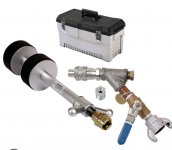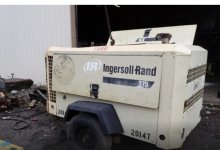TwoBlocked
Senior Member
- Location
- Bradford County, PA
- Occupation
- Industrial Electrician
Got a small job coming up. Part of it is to "dewater" some underground 2" conduit that got flooded. Nothing is in them, just for future use. No caps had been installed on the stub ups, so the flood waters was free to enter, and they are full.
Haven't done this before. Figure to start with blowing them out with a shop vac. Once most of the water is out, keep blowing into one end while holding a hand over the other to build up pressure and then release it to "burp" more water out.
Here's my question: Should I stop after burping, or should I try to pull some kind of piston through to get all the water out? I'm concerned with getting it stuck if there is a lot of mud, or if the conduit broken under ground. I'm sure some of you fine folks have good advice for me.
Haven't done this before. Figure to start with blowing them out with a shop vac. Once most of the water is out, keep blowing into one end while holding a hand over the other to build up pressure and then release it to "burp" more water out.
Here's my question: Should I stop after burping, or should I try to pull some kind of piston through to get all the water out? I'm concerned with getting it stuck if there is a lot of mud, or if the conduit broken under ground. I'm sure some of you fine folks have good advice for me.


